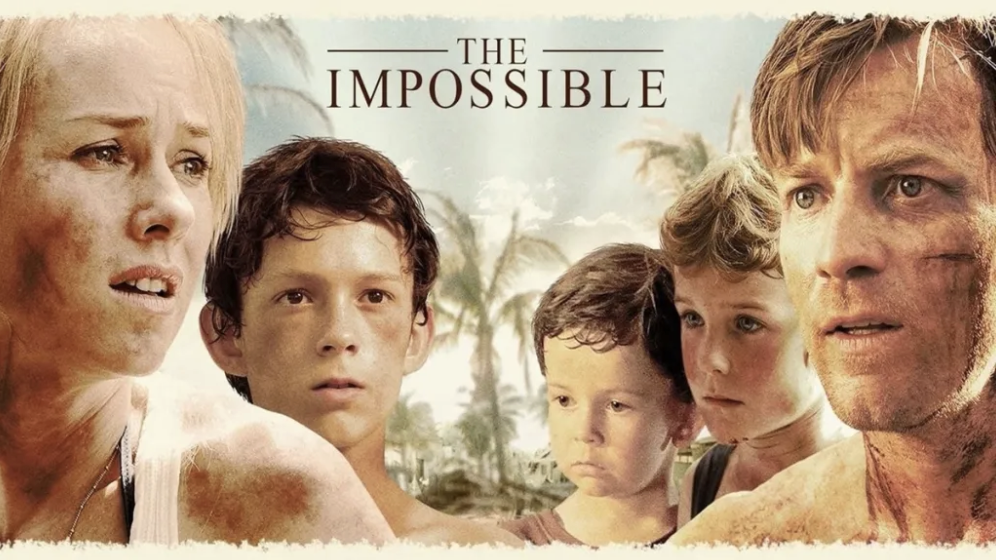
thepreppingguide.com
Top 10 Netflix Show Recommendations for Survival Enthusiasts
Facebook
Twitter
Pinterest
Imagine being stranded in the vast, untamed wilderness with only your wits to rely on. Would you know how to find shelter, source water, or signal for help? While most of us may never face such extreme situations, the thrill of watching others navigate these challenges has captivated millions of viewers worldwide. Netflix has tapped into this fascination, curating a collection of survival shows that not only entertain but also immerse us in the depths of human perseverance and ingenuity.
Key Takeaways:
While survival shows are designed for entertainment, they also offer valuable insights. Watching these shows critically and questioning dramatized elements can help you extract practical survival information.
The lessons learned from survival shows can be adapted to real-life prepping. Understanding your local environment, researching survival techniques, and preparing emergency kits based on these insights can enhance your overall readiness for any situation.
Building a shelter, starting a fire, and foraging for food are essential skills that can make the difference between life and death in survival situations. Practicing these skills in safe environments can prepare you for real-life emergencies.
This list explores the best survival shows on Netflix. These shows offer a unique blend of drama, education, and inspiration, making us wonder how we would fare in similar circumstances and providing practical lessons for the adventurous at heart.
10 Best Netflix Survival Shows
The best Netflix survival shows offer a unique blend of challenges, settings, and narratives. Here’s a look at ten standout series that have captured the imagination of viewers worldwide:
1. The Impossible (2012) – Overcoming Nature’s Fury
“The Impossible” is a harrowing true story of a family caught in the devastation of the 2004 Indian Ocean tsunami. It portrays their intense struggle to reunite amidst overwhelming chaos. This movie is not only gripping due to its dramatic portrayal of a real disaster but also highlights the resilience and emotional strength humans can muster in dire situations. It explores the physical and psychological aspects of survival against natural calamities.
2. How It Ends (2018) – A Post-Apocalyptic Journey
“How It Ends” features a thrilling journey across a mysterious apocalyptic landscape where a man, alongside his future father-in-law, traverses a country thrown into chaos to find his pregnant wife. The mix of suspense and action keeps viewers on the edge of their seats, making it captivating. It explores the human response to societal breakdown and the instinctual drive for personal survival.
3. You vs. Wild (2019) – Interactive Survival Adventure
In “You vs. Wild,” viewers make decisions for survival expert Bear Grylls as he tackles wild environments. Each choice affects the outcome, putting survival strategies to the test. The interactive element makes this series engaging and educational, allowing viewers to feel involved in Bear’s adventures. It covers practical survival skills in various scenarios, offering a hands-on learning experience.
4. Alice in Borderland (2020) – Psychological Thriller Meets Survival
“Alice in Borderland” thrusts characters into a deadly game where they must survive in a deserted Tokyo. The stakes are high, and the games are deadly, blending psychological twists with physical survival. This series stands out for its intense storyline and the mental and physical challenges it presents. It’s particularly engaging for those who enjoy strategic thinking and psychological tension in survival scenarios.
5. Win the Wilderness (2020) – Survival in the Harsh Wilderness
“Win the Wilderness” features British couples competing to survive in Alaska’s extreme conditions to win a home. They face tests that challenge their physical endurance and survival skills. The show is fascinating for its portrayal of survival in the wilderness and the interpersonal dynamics it explores. Viewers get insight into what it takes to live off-grid and the skills needed to adapt to one of the toughest environments on earth.
6. Southern Survival (2020) – Testing Survival Gear in Extreme Conditions
“Southern Survival” follows a team as they test survival products in tough conditions. The series is educational, showing how different tools perform in real-life survival scenarios. It’s both informative and entertaining, providing valuable insights into the practicality of survival gear. The show appeals to those interested in preparedness and the effectiveness of survival technologies.
7. Squid Game (2021) – Survival Through Deadly Games
“Squid Game” revolves around participants in a brutal competition where childhood games turn lethal. It’s a dark critique of society and desperation, where stakes are life and death. The show is thrilling and deeply emotional, exploring themes of desperation and survival under extreme pressure. It captivates audiences with its unique premise and the intense psychological depth of its characters.
8. Aftershock (2022) – Surviving Natural Disasters
“Aftershock” documents real-life stories of recovery after natural disasters. It focuses on the resilience of individuals and communities rebuilding their lives. This series provides a touching look at human strength and community spirit. It covers survival not just through immediate response but through the long-term process of recovery and rebuilding, making it profoundly impactful.
9. Keep Breathing (2022) – Solitude and Survival in the Wilderness
“Keep Breathing” features a lone survivor of a plane crash in the Canadian wilderness. The series takes the audience through her fight for survival against nature and her inner demons. It’s a compelling exploration of solitude and resilience, offering viewers a deep dive into the psychological impact of isolation and the survival instincts it triggers.
10. Outlast (2023) – A Test of Endurance and Strategy
“Outlast” pits contestants against each other in the wild, where they must endure nature and each other without traditional elimination. The focus is on endurance and alliance-building. This reality show emphasizes the psychological and strategic aspects of survival. It’s engaging for its portrayal of human dynamics and the tactical decisions that influence survival in harsh conditions.
Practical Lessons from Netflix Survival Shows
Netflix survival shows are more than just adrenaline-pumping entertainment; they offer a treasure trove of practical lessons that can be invaluable for anyone interested in prepping and survival. Here’s a closer look at some lessons you can get from watching them:
Shelter Building
In “Keep Breathing,” the protagonist, after her plane crashes in the remote Canadian wilderness, must build a shelter to survive. Viewers learn the importance of selecting the right location, using available materials, and constructing a shelter that offers protection from the elements. Similarly, “Win the Wilderness” features couples building shelters in the harsh Alaskan wilderness, highlighting different construction techniques and the importance of a sturdy, insulated structure.
Foraging
“You vs. Wild” with Bear Grylls showcases a variety of foraging techniques in different environments. Grylls demonstrates how to identify edible plants, berries, and insects, emphasizing the importance of knowledge and caution in foraging. “Alice in Borderland” also touches on foraging as characters scavenge for food in a deserted Tokyo, illustrating the critical nature of finding safe and sustainable food sources in survival situations.
Fire-Making
Fire-making is a crucial skill highlighted in shows like “Southern Survival” and “Outlast.” In “Southern Survival,” the BattlBox team tests various fire-starting tools under extreme conditions, providing viewers with insights into effective fire-making techniques. “Outlast” contestants also rely on fire for warmth, cooking, and protection, demonstrating the practical steps needed to start and maintain a fire in the wild.
Adapting to Natural Disasters
“The Impossible” is a gripping tale of a family’s survival during the 2004 Indian Ocean tsunami. The film underscores the importance of quick thinking, adaptability, and staying calm under pressure. Similarly, “Aftershock” follows communities recovering from natural disasters, highlighting the importance of community support and resourcefulness in rebuilding lives.
Navigating Post-Apocalyptic Scenarios
“How It Ends” portrays a journey across a post-apocalyptic landscape, emphasizing the need for strategic planning and adaptability when faced with both human and natural threats. The protagonists’ journey teaches viewers about the importance of preparation, navigation skills, and the ability to improvise when plans go awry.
Reality Check: Balancing Entertainment and Practical Survival Information
Survival shows on Netflix are undeniably thrilling, combining the excitement of adventure with the suspense of high-stakes challenges. However, it’s essential to remember that these shows are produced for entertainment. While they offer valuable survival insights, some elements are dramatized to keep viewers hooked.
The key is to enjoy the adrenaline rush while also being discerning. Many scenarios are exaggerated or simplified for dramatic effect. For instance, a contestant might build a shelter in minutes, but in reality, such tasks often take hours, if not days. Recognizing this balance helps viewers appreciate the entertainment value while understanding the practical limitations and real-time efforts required in true survival situations.
Watching survival shows with a critical eye can enhance both your enjoyment and your learning experience. Here are some tips:
Focus on Fundamentals: Pay close attention to the basic survival skills demonstrated, such as fire-making, foraging, and water purification. These are often rooted in real techniques that can be valuable in actual survival scenarios.
Question the Dramatics: When a situation seems overly dramatic or too convenient, ask yourself how it would play out in a real-life scenario. This can help you separate entertainment from practicality.
Research and Cross-Reference: Use the show as a starting point for your research. Look up the techniques and tools shown to verify their effectiveness and learn more about their real-world applications.
Learn from Mistakes: Contestants often make mistakes under pressure. Observing these errors and the resulting consequences can provide valuable lessons on what not to do in a survival situation.
Consider the Environment: Understand that the environment in the show may differ significantly from your local area. Adapt the lessons learned to suit your specific region’s climate, flora, and fauna.
Conclusion: Survival Lessons Learned
Netflix’s collection of survival shows offers more than just gripping entertainment; they provide valuable insights into human perseverance, ingenuity, and the practical skills needed to survive in extreme conditions. From building shelters in the wilderness to navigating post-apocalyptic landscapes, these shows immerse viewers in a wide array of survival scenarios, each with its own unique lessons.
While some elements are dramatized for entertainment, the core survival techniques and problem-solving strategies presented can inspire and educate those interested in prepping and survival. By watching these shows critically, viewers can separate fact from fiction and apply the practical lessons to real-life situations.
FAQs
Are there any real-life survival experts featured in Netflix shows?
Yes, several Netflix survival shows feature real-life survival experts. For instance, “You vs. Wild” stars Bear Grylls, a renowned survivalist who guides viewers through interactive survival scenarios. These experts add authenticity to the survival challenges depicted, offering practical knowledge and skills valuable in real-life survival situations.
What survival skills can viewers learn from Netflix survival shows?
Netflix survival shows offer a range of skills, from basic wilderness survival techniques like fire-starting and shelter-building to more advanced strategies such as water purification and navigation. Shows like “Southern Survival” specifically focus on testing and demonstrating various survival products and techniques, providing viewers with practical knowledge that could be crucial in emergency situations.
Are there any behind-the-scenes documentaries about the making of Netflix survival shows?
While specific behind-the-scenes documentaries on the making of Netflix survival shows are rare, many series include special episodes or features that explore the production challenges and processes. These segments often provide insights into the extensive planning and safety measures involved in creating realistic survival scenario.
Facebook
Twitter
Pinterest
The post Top 10 Netflix Show Recommendations for Survival Enthusiasts appeared first on The Prepping Guide.















![Mike Johnson Thinks The 25th Amendment Should Be Used To Remove Biden [VIDEO]](https://www.rvmnews.com/wp-content/uploads/2024/07/2024.07.10-01.42-rvmnews-668e8fdd89867.jpg)
